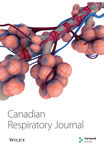Canadian Sleep Society/Canadian Thoracic Society position paper on the use of portable monitoring for the diagnosis of obstructive sleep apnea/hypopnea in adults
Abstract
The present position paper on the use of portable monitoring (PM) as a diagnostic tool for obstructive sleep apnea/hypopnea (OSAH) in adults was based on consensus and expert opinion regarding best practice standards from stakeholders across Canada. These recommendations were prepared to guide appropriate clinical use of this new technology and to ensure that quality assurance standards are adhered to. Clinical guidelines for the use of PM for the diagnosis and management of OSAH as an alternative to in-laboratory polysomnography published by the American Academy of Sleep Medicine Portable Monitoring Task Force were used to tailor our recommendations to address the following: indications; methodology including physician involvement, physician and technical staff qualifications, and follow-up requirements; technical considerations; quality assurance; and conflict of interest guidelines. When used appropriately under the supervision of a physician with training in sleep medicine, and in conjunction with a comprehensive sleep evaluation, PM may expedite treatment when there is a high clinical suspicion of OSAH.




